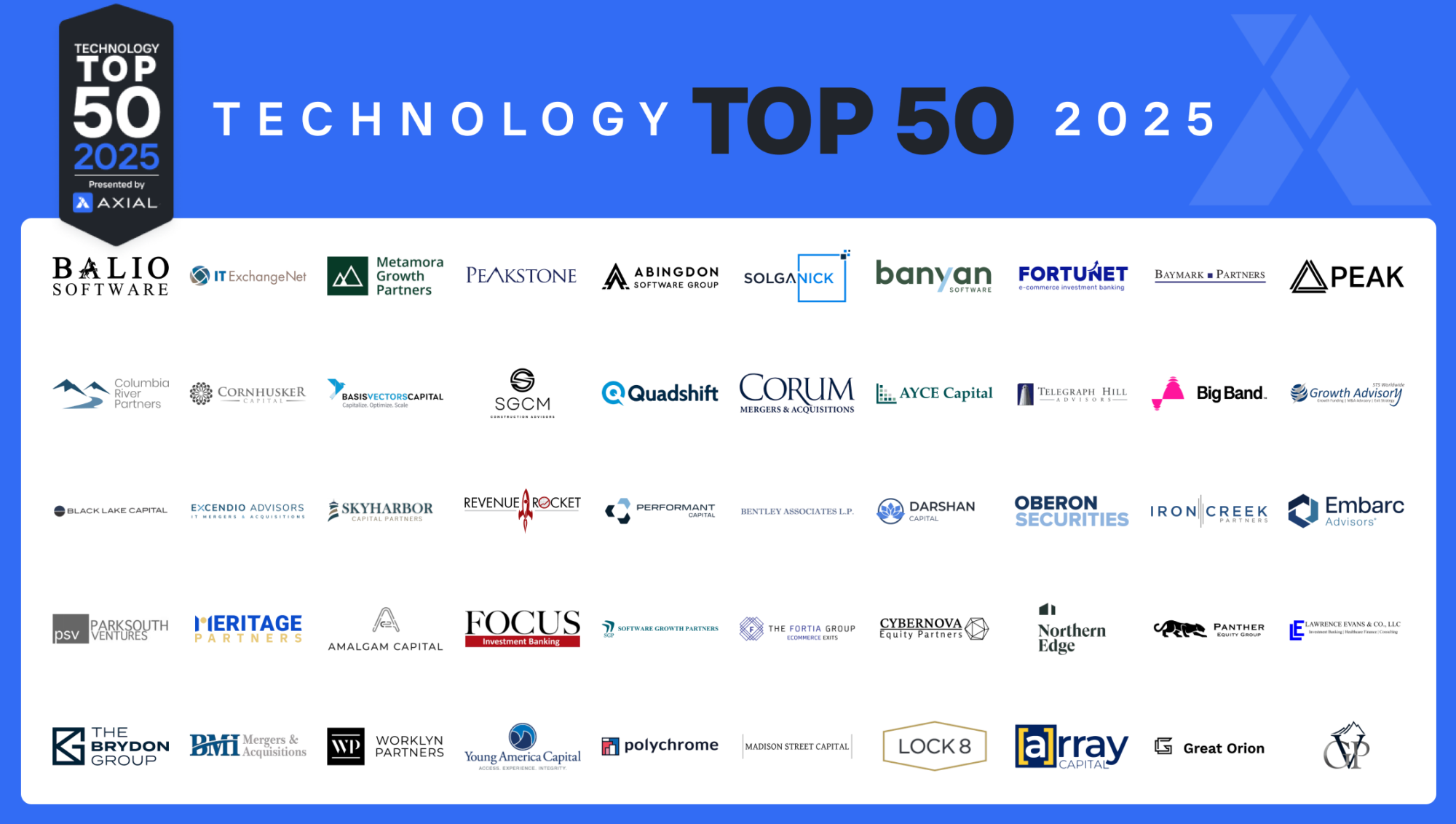
The Top 50 Lower Middle Market Technology Investors & M&A Advisors [2025]
Technology remains a steady presence in the lower middle market, representing ~13% of deals brought to market via Axial over…
Advisors, Business Owners, CFOs
There are many reasons a business might achieve less than its desired price upon sale, the most fundamental of which is that a buyer does not assign the business the same value as the seller.
Here are some common company characteristics that cause buyers to downgrade value — and ways to address them in advance of a sale.
A business should not be overwhelmingly dependent on any one customer, employee, or supplier.
If a key employee quits unexpectedly, a supplier goes out of business, or a customer leaves for a competitor, will your revenue dip by a meaningful amount? According to a recent webinar held by John Warrillow, author of Built to Sell, no more than 10-15% of revenue should be coming from one person or source.
Buyers look for companies with a foreseeable path for growth. As a seller, you should be proactive in identifying where growth opportunities exist and how a new owner might take advantage of them.
You might present the potential buyer with a list of businesses you have considered as potential acquisition targets, or provide details around new geographic markets or customer segments. Be sure to demonstrate what resources are in place to support increased demand, should the new owner choose to pursue any of these strategies.
“You want to present a buyer with a map to growth, not simply say, well, here’s where we’ve gotten and now it’s up to you,” says Giff Constable, a former investment banker and current VP of Product at Axial. “These growth areas should be defendable both in terms of proof points to back your ideas up as well as the company’s ability to actually execute on them.”
Warrillow’s research shows that mid-sized businesses that have plans in place to meet a substantial, overnight increase in demand could get up to 4.5x on earnings (vs. 3.7x for the average business).
The more cash you generate in excess of your working capital requirements, the more your company will be worth.
“When a buyer buys your business, he writes two checks — one to you, as the owner, and one for working capital. If they have to inject a lot of working capital into your company, their appetite to write a big check to you is going to be less,” says Warrillow.
The two main ways to increase cash flow are to accelerate accounts receivable and to extend accounts payable. To achieve the first, incent your customers to pay early by offering discounts for paying within a certain period of time. It’s also wise to accommodate as many methods of payment as possible (credit cards, wire transfers, etc.) to offer flexibility to your customers.
While delaying payments made to suppliers or vendors can be a bit trickier, negotiating terms to extend payment deadlines, or opting for annual versus more regular payments (and spreading out those annual contracts) can help you keep more cash on hand.
For companies in industries where the cost of working capital is characteristically high, such as manufacturing and retail/consumer products, think about creative ways to bring more cash into the business, such as charging for ongoing customer service, membership programs, and rewards.
We’ve all seen the headlines for tech companies fetching high multiples. Particularly for companies with subscription-based revenue models, buyers have been known to pay lofty premiums for the advantage of being able to lock in predictable future revenue.
A subscription, or recurring revenue model, has long been a widely-accepted strategy for companies which have repeat customers and products or services that are consumed over time (for example media and software).
For companies outside of this sphere (e.g., seasonal businesses or companies who have to maintain a high inventory, such as retailers or manufacturers), creating predictable, recurring revenue may not be as obvious. That doesn’t mean, however, that it can’t be achieved.
One great example of a more traditional business with a recurring revenue model is Michelin Tires. Instead of selling tires, Michelin employs a per-mile payment model, which is more effective at establishing loyal long-term customers.
The less differentiated your business is, the less attractive it will be to a buyer. Warrillow says that companies should focus on building a “deep and wide competitive moat” — i.e., high barriers that disable other market entrants from gaining share of business from you.
One of the unavoidable side effects of being a highly commoditized business is having to compete on price. The less pricing authority you have, the less money you can make. The less money you make, the less you have to invest into growing the business.
Warrillow’s research shows that companies that focus on creating this level of authority in their market can increase their multiple by a full turn over the average small to mid-sized business.
If you’re exiting the business, expect a buyer to spend less time with you and much more digging into the competencies of your team. A company that expects to get top dollar must prove that operations can not only be sustained, but flourish, under the new owner. Since there’s likely a learning curve before a new chief operator can reach the same level of effectiveness as the exited owner, the support of the existing team is paramount to a successful transition.
Here are few questions to expect from buyers:
